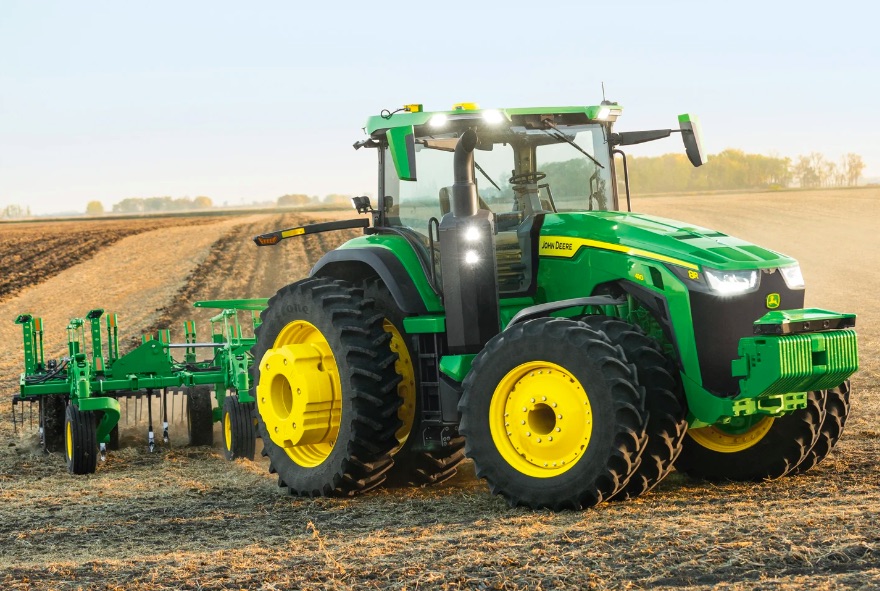|
Listen to this article  |

John Deere has acquired SparkAI, a New York-based startup that develops human-in-the-loop technology to help robots resolve edge cases in real time. John Deere, which has developed autonomous tractors, was a SparkAI customer for a few years prior to the acquisition. Financial terms of the deal were not disclosed.
Willy Pell, VP of autonomy and new ventures at Blue River Technology, a company John Deere acquired in 2017 for $305 million, announced the acquisition on LinkedIn. Michael Kohen, founder and CEO of SparkAI, also posted about the acquisition on the social media platform. SparkAI was founded in 2020 and had raised $7.3 million before being scooped up by John Deere.
Kohen was a guest on The Robot Report Podcast in September 2022 and discussed the company’s human-in-the-loop technology at length.
Operating in a harsh environment like a farm with dust, rain and snow can occasionally make it difficult for machine learning models to consistently make confident & safe decisions. Here’s how the technology works with John Deere’s autonomous tractors:
In moments of low confidence, the autonomous tractor automatically calls SparkAI’s service, passing imagery and other metadata via REST API. The objective is to resolve difficult-to-discern details about the scene to support a real-time decision. SparkAI said it does this by combining two key components in real-time:
- 1. Cognitive input from multiple human mission specialists trained for the use case
- 2. Results from its proprietary software-based decision system
SparkAI returns this resolution to the autonomous tractor. The robot combines this resolution with its pre-existing knowledge of the world to decide on a safe and confident action. According to SparkAI, the entire round-trip process takes seconds and happens thousands of times per day, 24/7.
SparkAI’s role in the workflow is not to take over control and remotely pilot the autonomous tractor. SparkAI provides contextual cues that the autonomous tractor is sometimes missing in order to make confident decisions.
Spark is going to expedite everything we do. We’re going to be able to ship products sooner and at higher quality with less work,” said Pell. “When we automate away the chunks of human intervention, we will do so with great datasets that characterize the problem across many situations and environments. And all the while we will be delivering value to the customers and learning more about our technology and the environment. And then we will apply that cognition to the next area of growth.”
This is the latest in a string of robotics-related moves by John Deere. In May 2022, it acquired numerous patents and other intellectual property from Light, which specializes in depth sensing and camera-based perception for autonomous vehicles. Financial terms of the deal are unknown. Light was founded in 2013 and raised $185.7 million before the acquisition.
In April 2022, John Deere formed a joint venture with GUSS Automation, a Kingsburg, California-based developer of semi-autonomous orchard and vineyard sprayers. Through the joint venture, Deere will help GUSS further collaborate with the Deere sales channel.
In August 2021, John Deere acquired Bear Flag Robotics for $250 million, a Calif.-based developer of autonomous driving technology for tractors. Founded in 2017, Bear Flag Robotics retrofits its autonomy stack onto existing tractors. It uses cameras, LiDAR and radar technology for redundant, 360-degree situational awareness on a farm.
And, of course, John Deere’s quest for autonomy was kicked off by its acquisition of Blue River Technology in 2017 for $305 million.
Credit: Source link


Comments are closed.